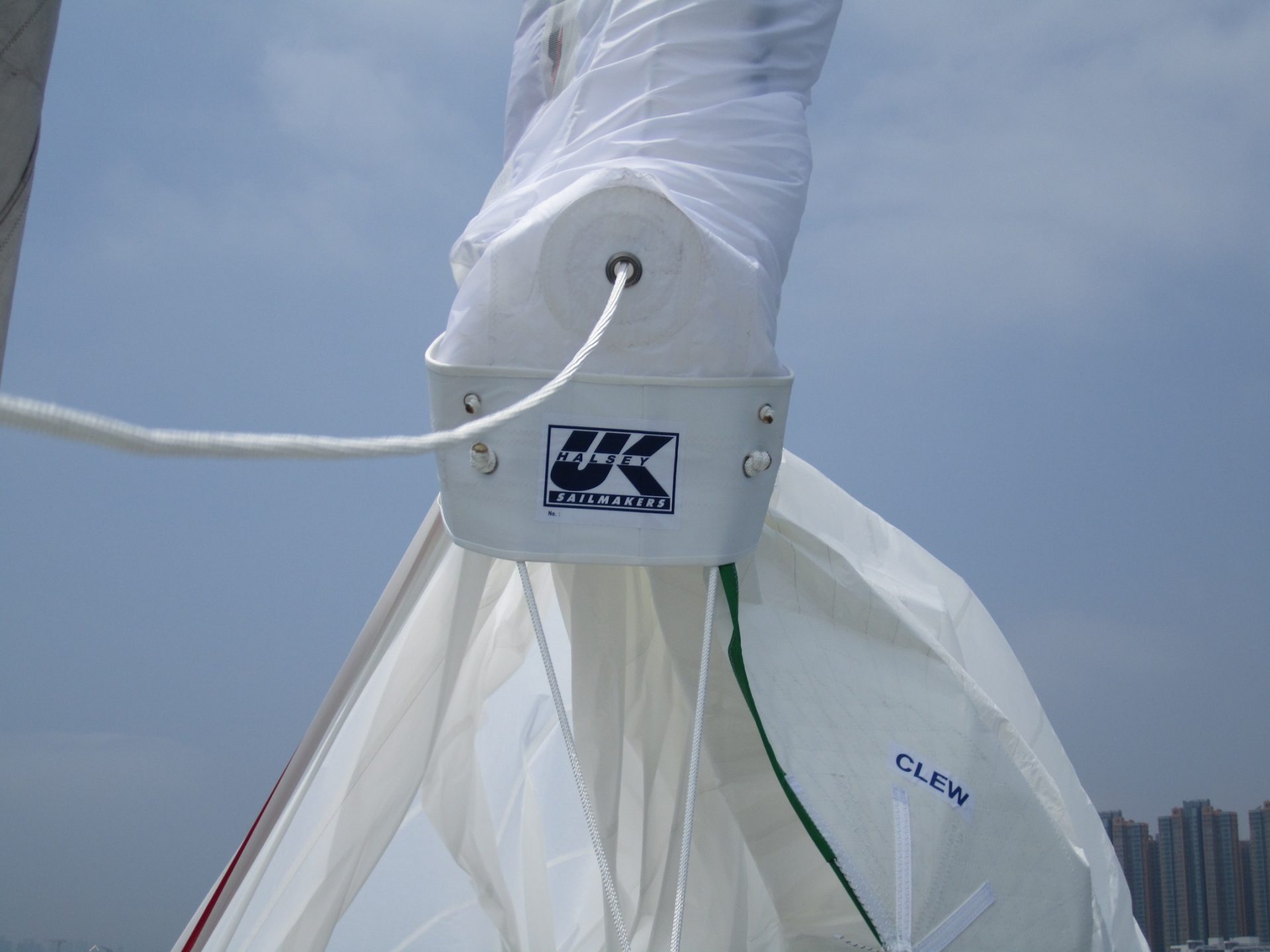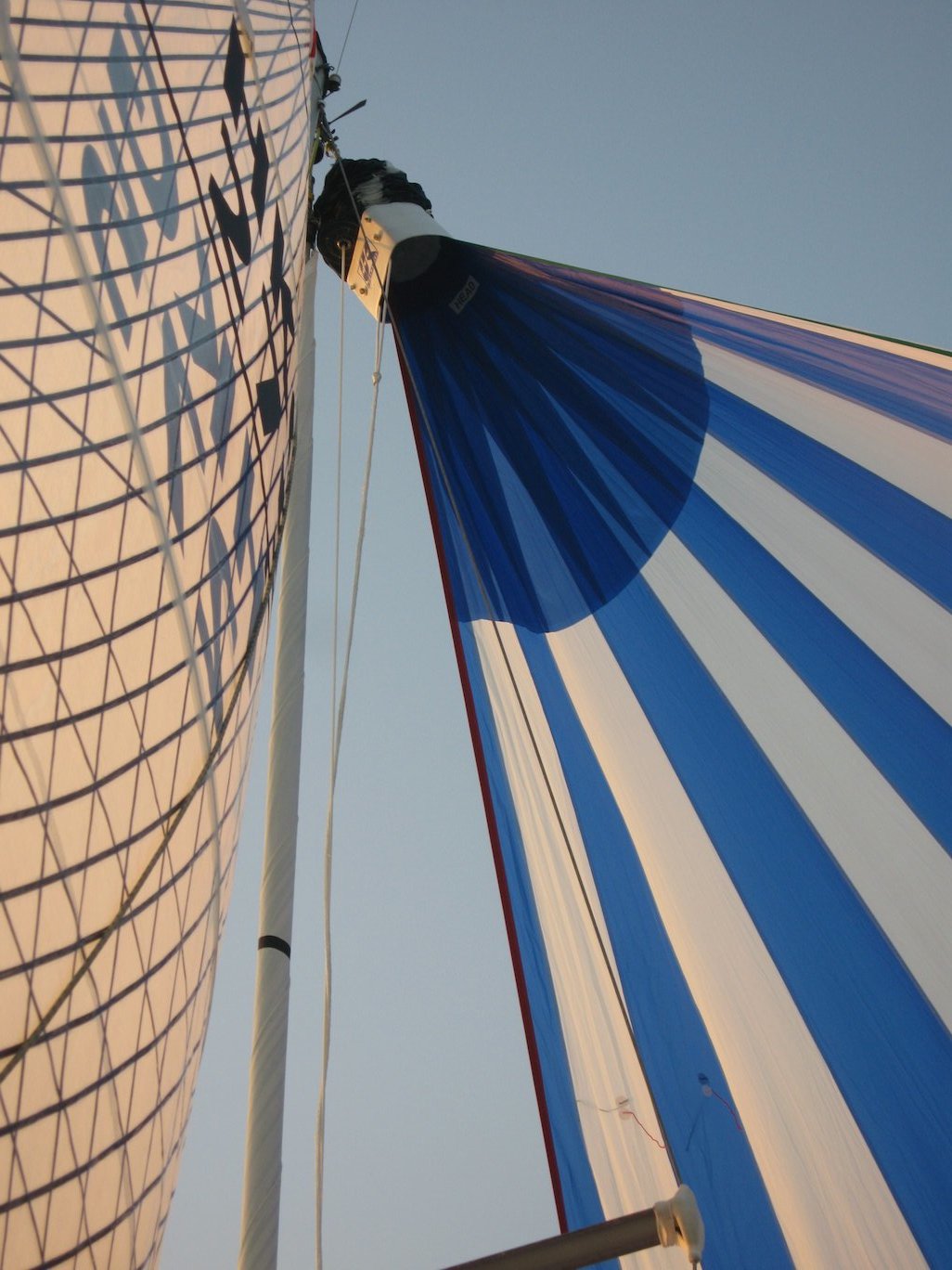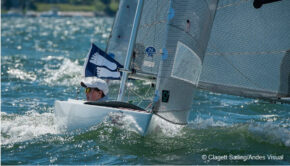Offwind sail handling systems
Published on April 10th, 2021
Barry Hayes, Director of UK Sails Ireland, delivers an education of the spinnaker and gennaker handling systems:
There are times in your boat-owning life when you need to step back and evaluate your vessel’s set-up. With an eye towards optimizing the boat for the way you sail it, you can opt for different sails, winches, running rigging, nav systems, and even headstay options.
This article addresses a simple but critical matter – selecting the right offwind sail handling systems. There are a number of alternatives available, and, as you would expect, each has its pros and cons. Here’s a look at the three most commonly used options for setting and retrieving a spinnaker:
Furling Gennakers
Furling gennakers are all the rage these days for cruising boats. They come in different shapes and sizes with a number of furling options. The main three are: top down furling with a cable, bottom up furling with a cable, and cableless gennakers. Sails with either of the cable furling options can be hoisted before leaving the dock and left up while sailing making life easier.
My preferred option is a top-down furling system with a cable sewn inside the luff of the sail. This clearly is the best option for bigger boats giving you the most control over the sail. The mid-girth of spinnakers using top-down furlers can be the same length as the foot of the sail (SHW 100 %), yet you still get a very tight furl. This system will never fail or get a twist in the sail–you can have confidence in getting a complete furl every time.
Top-down furling gennakers are perfect for offshore, long-distance cruising as you can leave the furled sail in place for long periods of time. You may want to consider adding UV covering on the leech and foot of the sail for added protection from the sun while furled.
Bottom-up furling gennakers
These can also be a good option and are the perfect blend of performance and value for money. The set-up is similar as the top-down furl except that the sail simply furls from the bottom to the top. To get a very tight furl, the mid-girth has to be smaller than for a top-down sail (SHW 60 % of the foot length) as you can’t furl the roach onto the cable.
Both the actual furler unit and the cable can be less expensive than those needed for top-down furlers as here you’re just furling it onto a spectra rope. This is a popular option for catamarans as they don’t need a large cruising roach.
Cableless furling gennakers
The latest variations these days, these sails furl onto themselves without a cable. This is, as you can imagine, a little tricky. The cost that would have gone into adding a cable to a spinnaker is redirected to building a more significant luff structure for the sail that does the same job as a structural cable.
These cableless Gennakers are a lot lighter and you can have a larger sail with mid-girth that’s SHW 75 % of the foot. Note, however, that you can run into issues trying to furl the sail and that the furl you can get from a cableless furling gennaker is not as tight as cable alternatives.
Imagine a furled cable gennaker is at thick as your arm and the furl of a cableless spinnaker would be thick as your leg. This system works well on small boats that don’t need the structural loading in the luff.
Video showing Oceanis 35 Top down furling Code D gennaker with a cable in the luff:
Having the right type of furler for these systems to work is critical. It needs to be top down with a ratchet lock on it. It also needs to take the working loads of the system.
The advantages of a top down furling system. Is it can be set before leaving the mooring. With a structural cable you get a perfect furl every time no matter how windy it is. This system can be used by just one person from the cockpit. Here is what Stephen McCarthy has to say about the system he uses on his XC 45 Nadie here in Kinsale:
Purchasing this boat was part of my retirement plan. With a view towards shorthanded cruising, the choice of sails and how they could be handled was important. Having a non- overlapping jib, it was obvious that the boat would struggle downwind, especially in light airs.
We decided we would go with a Code D top-down furling gennaker with the Ubi- Maior Furler. This was one of the best decisions we made about this boat. We fitted a 2/1 halyard to get proper luff tension which is important for the system to work properly. We then led the furling line to the cockpit for safer shorthanded operation. The furler is fitted with a snap shackle to a fixed eye on the bow making it easy to change sails.
From a practical point-of-view, it is easy to set-up your sail plan before you start sailing. One of the safety features of the Ubi-Maior Furler is its rachet which secures the Code D Gennaker so it does not unexpectedly open.
It is hard to describe the feeling you get as the boat sails along, fully powered-up in less the 10kts of wind. Autopilot on, Code D gennaker up, full main, relaxing in the cockpit–life does not get much better. I have no doubt, that without these sails, the engine would be getting a lot more use, which defeats the whole purpose of buying a sailing boat.
Stasher® Dousing Socks
Stasher dousing socks have been the mainstay for 90 % of cruising boats for many years. There are a few primary models available with the ATN stock being the most popular. The ATN is a little heavy with a fibreglass collar at the neck that, if you’re not careful this can damage and scratch the inside of your boat.
The racing stasher has a flexible collar, and in my opinion, this is a good option for both racers and cruisers. The sock can be used safely offshore and at night as it can be pre-hoisted before setting the sail and the continuous line allows you to hoist (set) and lower (douse) the sail from the foredeck.
Note, this line needs to be tied off when its open and the sail is in use. With this easy-to-use system you can have a standard-sized gennaker with 100% mid-girth. And, you should have no real issues gybing spinnakers set with a Stasher as long as you keep the control line clear.
Stasher socks are always hoisted and dropped to leeward making it easier to control how they open and close. The advantages are they are relatively inexpensive and simple to use. No matter how windy, you can stow the sail away.
The disadvantages are that Gennakers using dousing socks can’t be left up when not in use. And you can get a spinnaker wrap when closing the sock if the sail is not full when you close the sail.
It should also be noted that some of the most successful offshore doublehanded racers use dousing socks. Here’s what Rich du Moulin, five-time winner of the doublehanded division of the Newport to Bermuda Race, says about using his stasher:
As a doublehanded boat, we always use the dousing sock with our spinnakers. Not only do we use socks for the sets and drops, we also use it to snuff the spinnaker when we gybe in breezes over 18-20 knots—once the main is across, we re-set the chute.
In the 2002 Block Island Race, I was sailing my Express 37 LORA ANN doublehanded with Peter Rugg aboard when a white squall whipped through the fleet just at dusk. Suddenly we found ourselves in a sustained 60-knot blow with the spinnaker up. Immediately, we were knocked down with our top spreader about 6-7 feet out of the water; the wind wasn’t letting the boat right itself.
As the wind continued to blow, Peter crawled forward along the windward side of the deckhouse. He grabbed the retrieval line of the dousing sock and slowly (it was hard work) started to capture the spinnaker that was lying atop the water. Finally, when he had managed to get the sail about half inside the sock, the boat popped back onto its feet.
We hadn’t taken any water so we were okay and the squall had passed. We turned back downwind, raised the sock again, and continued to race. Reportedly every boat in the race with the exception of one was knocked down by that “invisible” squall.
I’m really glad we were using the dousing sock, but having it was not enough. We had practiced using the dousing sock—not necessarily for this situation—but we knew how to keep the retrieval line clear and free of knots for any situation that came up.
Racing Spinnakers
When the Racing Rules of Sailing’s prohibited throwing anything into the water, the age-old methods of using rubber bands or yarn to stop a spinnaker became a thing of the past.
Today, new techniques have been created with attached permanent “stops” to the luff of spinnakers. Many of today’s standard racing spinnakers use either an integrated zipper or a bungy system allowing you to hoist a “stopped” sail with nothing going into the water.
The zipper system works well for bigger boats, but can be difficult to use on smaller boats given the limited space below to stretch out the sail to bind it. The bungee system is easy to use, it can be done on deck, the stops open quickly and can be use on both big and small boats.
Takedown systems for racing sails have also come on a long way, too, with 6-second string drop systems becoming more commonplace. These are normally used on boats 40-foot or larger as you need the mechanical advantage of a coffee grinder to make this system work effectively (although the IC 37 has the retrieval line manually retracted by a crewmember).
These dramatic-to-watch takedowns are simple in concept, but need all the mechanics to work properly to be successful. Basically, a retrieval line is attached to the belly of the sail and led down the forward hatch and then aft being connected either directly or indirectly to the pedestal winch.
Once the grinders have taken the slack out of the retrieval line the command is given to go for the drop, the tack and sheet are fired simultaneously as the grinders wail on the retrieval line. As the take down line starts running to the hatch, the halyard is fired and, ideally, the sail is pulled into the forward hatch.
The timing and choreography of all these movements must be carefully practiced and timed. These string drops look very slick when they works but can be a disaster when they don’t.
The advantages of this system are it is lighter than cables, reinforced luffs, or dousing socks, it is the fastest retrieval method and set-up costs the least amount. The disadvantages are you need a full crew and coffee grinders to use this system.
How you set and take down your gennaker will depend on whether you’re racing or cruising, if you’re in flat waters or offshore, and how many hands you have on board. In all cases, you should practice your set/drop options in calm, light conditions so you’re ready to face whatever conditions that may develop.










 We’ll keep your information safe.
We’ll keep your information safe.